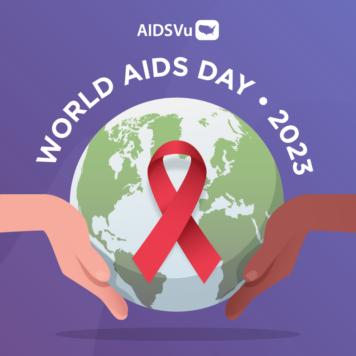Dr. Jennifer Kates is Vice President and Director of Global Health & HIV Policy at the KFF. She oversees KFF’s policy analysis and research on the U.S. government’s role in global health and the global and domestic HIV epidemics.
PEPFAR has been in the news recently since Congress failed to reauthorize the program over concerns about abortion. Without this underlying authorization, advocates fear that the program will be subject to steep cuts or complete elimination in the future. Can you provide a short overview of the history of the PEPFAR program since its inception in 2003, for those who aren’t familiar?
PEPFAR, the U.S. President’s Emergency Plan for AIDS Relief, was launched in 2003 by President George W. Bush, with bipartisan support from Congress, to address the global AIDS pandemic. At the time, HIV was devastating Sub-Saharan Africa and the launch of a new prominent program was an effort to help address this seemingly insurmountable problem. Announced by the President in his State of the Union address, Congress passed bipartisan legislation authorizing the creation of PEPFAR just a few months later. In the 20 years since then, PEPFAR has been reauthorized three times with ongoing bipartisan support. It was due to be reauthorized by Congress for a fourth time by September 30, but during discussions about reauthorization, was caught up into the larger, national battle over abortion. This has essentially stalled the process and it has yet to be reauthorized.
In your opinion, why is it so essential that we preserve the PEPFAR program from a public health perspective?
The PEPFAR program has demonstrated that a concerted, bipartisan effort to address a true emergency on the ground, with robust funding and based on the science, can yield significant public health benefit. PEPFAR itself estimates that the program has saved 25 million lives, and numerous other studies have documented its impact, including studies we have undertaken. We recently released a study showing a significant correlation between PEPFAR and declines in overall country mortality rates; these declines were so large that they could not be attributed to HIV mortality reductions alone, suggesting a spillover effect of the program. In fact, we also found that PEPFAR funding was significantly correlated with declines in maternal and child mortality and with increases in childhood immunization rates in PEPFAR countries. In addition, studies have shown that PEPFAR has had diplomatic benefit, creating goodwill among partner countries and shaping positive views of the U.S. Taken together, these studies demonstrate that in addition to its PEPFAR’s ability to turn the tide on HIV, it has had important impacts beyond HIV.
In a paper published in September by KFF, you provided a detailed description of the consequences that would arise if PEPFAR funding is not renewed. What message did Congress’s failure to reauthorize the program convey, both domestically and internationally? Furthermore, what would be the impact on global public health?
First and foremost, it’s important to note that PEPFAR is a permanent part of U.S. law. It does not need to be reauthorized to continue, as long as Congress continues to fund it. So far, funding is not at risk but without a reauthorization, it could be more vulnerable in the long term. That said, the current situation marks a stark departure from the widespread, bipartisan support it has maintained throughout its existence and that allowed it to be reauthorized several times already. This departure itself carries symbolic weight – the potential end to the bipartisan consensus that PEPFAR can operate outside of some of the larger political debates in the country. It also could suggest to partner countries and the people in those countries who depend on PEPFAR to survive that the U.S. government is not entirely behind this program – there’s already anecdotal evidence that this is happening.
To the extent that this perception leads implementers and others to modify programs on the ground, it could have negative effects on health outcomes. Finally, while PEPFAR is a permanent part of U.S. law that continues even without a reauthorization, there were several requirements and provisions in its authorizing legislation that did “sunset” or end after September 30, such as the requirement that at least 10% of PEPFAR funds be spent on orphans and vulnerable children. If Congress wants these requirements to continue, as part of its oversight of the program, it would have to either reauthorize the program or find some other legislative vehicle to require them.
You also co-wrote a paper for KFF that examined the impact of PEPFAR on areas beyond public health. The analysis revealed that between 2004 and 2018, PEPFAR was linked to a 2.1 percentage point increase in the GDP growth rate per capita over the same period. This increase was higher than what could have been expected in the absence of the program. Can you explain what caused this spillover effect on GDP?
We were interested in whether there was evidence of PEPFAR having spillover effects beyond health (as mentioned earlier, we already had found health impacts beyond HIV). We hypothesized that because PEPFAR provided such significant funding to countries and also saved so many lives through its HIV programs, allowing people to live who would otherwise die, it could have larger economic and educational benefits.
And, as you mentioned, we did indeed find a significant correlation between PEPFAR funding and GDP growth in PEPFAR countries. We also found a significant correlation with the share of children staying in school. This suggests that the investments made by the U.S. through PEPFAR were enough to promote economic development and achieve better educational outcomes.
What are the key priorities for PEPFAR going forward, and how can the program continue to reduce HIV infection rates and improve the lives of those affected by the disease?
A major challenge that PEPFAR has identified is the lack of reauthorization, and PEPFAR, as well as a wide range of stakeholders, continue to call for the program to be reauthorized for another five years without changes to the program. Beyond that political challenge, the program itself is also increasingly focusing on a few areas, particularly the sustainability of the HIV response, working with partner countries to be able to take on more of the responsibility for HIV programs over time while ensuring that HIV gains continue. Another PEPFAR priority is not leaving anyone behind. As we have seen, there are some populations, particularly gay and bisexual men, sex workers, drug users, and others, who face incredible stigma and discrimination, and whose governments not only may not provide them with services, they may criminalize them for who they are or for seeking services.
Thus, the U.S. government is grappling with how to reach those populations and continue to support them, even if partner countries take on more of the HIV response. The U.S. government is also prioritizing the identification of those who are still not benefiting from treatment and prevention interventions to ensure that everyone is reached. For example, in many countries, young girls are infected with HIV at much higher rates than young men. At the same time, data show that young boys and young men, as well as children, are lagging in treatment access.




